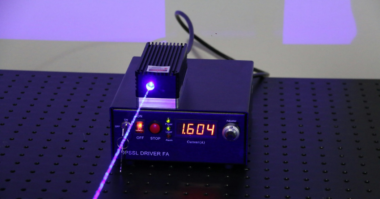By Jeffrey Shaffer, Product Marketing Manager
Municipal water treatment facilities serve communities by providing clean potable water for personal and business consumption. The water treatment process varies depending on the municipality and the systems they have put into place: from UV systems to clean and kill bacteria to the more common systems which introduce chemicals, stabilizers, or flocculants into the water through pumping systems in order to clean and treat the water stream.
The amount of water being treated at each municipal facility and the contamination levels of the water are always changing, which requires each facility to constantly adjust the amount of chemicals needed to reach proper water quality. Because more water is consumed during summer months, there is also an increased need for treatment of contaminated waste water returning from these sources. These seasonal adjustments to the amount of water treated in one facility can be difficult for municipal systems to manage, especially given the limitations of their equipment.
For pH adjustment and control of bacteria and odors, soda ash, lime slurries, and sodium hypochlorite are common chemical choices and are generally handled by peristaltic hose pumps because these pumps are able to meter the material accurately based on measurements taken by sensors within the facility’s Supervisory Control and Data Acquisition (SCADA) system. The SCADA system can send feed back to the pump and adjust the speed, controlling the amount of lime, sodium hypochlorite, or other chemical feeding into the water or wastewater supply for the treatment process.
Challenge
In recent years, municipalities are recognizing some of the drawbacks of typical peristaltic hose pumps in these applications. One major drawback is that peristaltic hose pumps require a VFD controller and are powered by a standard AC induction motor coupled to a gearbox set to a specific gear ratio to provide the proper output flow, and often times, this system does not meet the user flow requirements . Standard AC induction motors must be operated within a window of 10 Hz to 60 Hz on the VFD, or in most cases, 10 Hz to 40 Hz for continuous duty operation. This gives the user up to a 6:1 turn down ratio between the minimum flow rate and the maximum flow rate. For example, if the minimum flow rate required is 0.25 GPM, the maximum flow rate achievable with the pump is 1.5 GPM. If these levels are not acceptable for the facility’s changing needs, the facility must install a secondary pump to accommodate for the additional flow during peak demand seasons.
Another major downside to the standard AC induction motor paired with electrically driven pumps is that the system will continue to pump regardless of what is happening downstream within the system. In the case of clogged lines and closed valves, the pump will continue to operate causing the pressure to increase. Rising pressures can cause the pump to burn up, damage the piping, and compromise the integrity of the system. Oftentimes, additional circulation loops or pressure sensors are the installed as the only way to alert users that action must be taken before damage is caused.
A small municipality within the Midwestern United States had been working with Graco to upgrade their peristaltic hose pumps, which were being used to supply soda ash to control and adjust pH levels in the water treatment process. Their current peristaltic pumps were working well for their operations, but the municipality was concerned about several occurrences in which valves were closed unknowingly by employees or lines became clogged causing the pressure to spike and the hose in the pump to blow out. Due to the nature of the pump, the municipality did not take immediate action to improve the situation other than replace the hose and get the pump back up and running.
Solution
As Graco learned of the common challenges among municipal water treatment facilities, it developed upgrades to its current peristaltic pump line with the objective of eliminating the issue of pressure buildup and saving many replacement hoses and unplanned downtime. The result was a new motor, the brushless DC motor, which provided control over the pump and visibility of what is going on in the system. For the first time, the brushless DC motor allowed the engineering group to monitor the system’s motor current required to operate the pump at a given pressure and use that information to automatically shut down the pump in the event that the pressure spiked above the maximum allowable for the pump and system. This unique software is built into the Graco Motor Controller that controls the brushless DC motor on the new platform. The controller functions similar to a standard VFD for an AC induction motor, but since it is proprietary to Graco, the engineering staff can implement additional software programs useful for end user applications.
Results
The small municipality that was previously experiencing hose failures installed a pump with the new software and tested the equipment by immediately closing valves downstream. As promised, once the pressure spiked above the 125 psi rating on the pump, the pump was shut down automatically, which potentially spared a hose replacement for the end user. The municipal water treatment facility was pleased by the safety and functionality of this feature and was excited to put their new system to work.
The brushless DC motor also resolved the issue of fluctuating demand for water treatment facilities by providing a much larger range of flow rates over an AC motor with VFD controller. This user currently had two peristaltic pumps installed to provide for their flow rate requirements during busy seasons. A lower speed gearbox was being used to achieve the lower end flow rates, and a second pump was required to help achieve the higher flow rates when needed. This facility was please to find that the DC motor could work across their entire flow range and beyond. Because of this, the municipality eliminated its second pump, and only one pump was needed for the application. They were happy to keep their AC pump as a backup to avoid potential downtime in the future. Overall the technology saved this small municipality in repair costs, maintenance time, and potential equipment investment costs by covering a wider range of flow.
A sample performance curve for the pumps highlighting the wider flow coverage is shown below:
Request a FREE demo pump today by visiting the website!





Comments